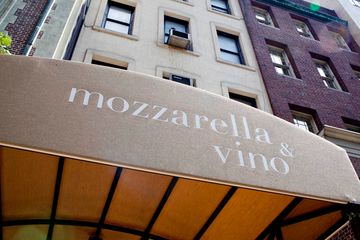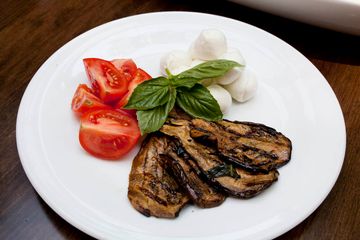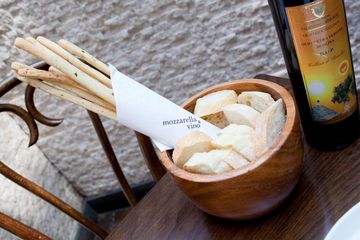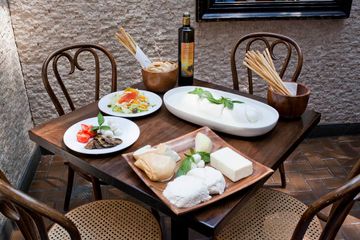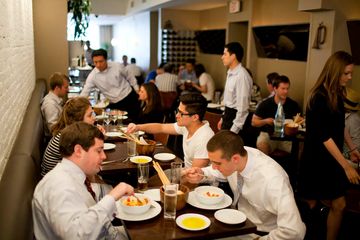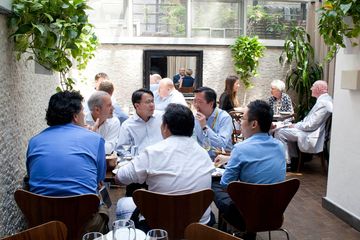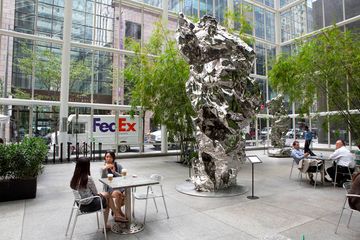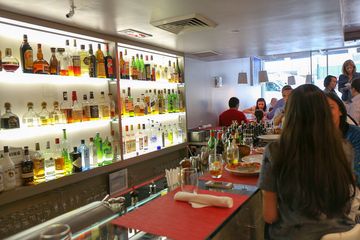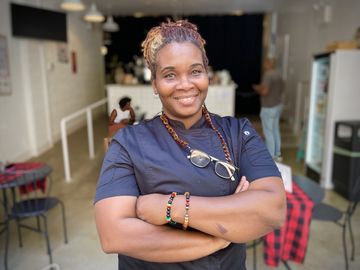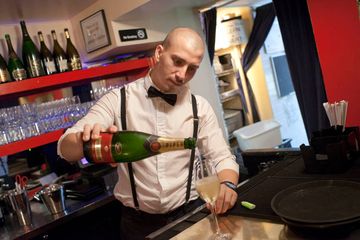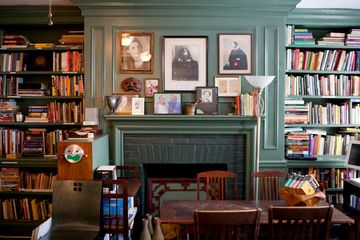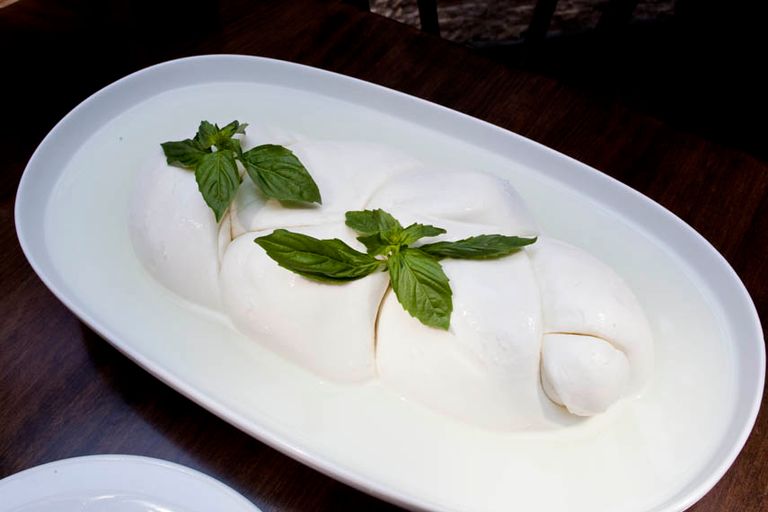
When I paused outside Mozzarella & Vino one humid weekday morning, it was the enticing scent of garlic that led me immediately down a few steps and into Gianfranco Sorrentino's second Italian restaurant on West 54th.
A few weeks later, I returned to Mozzarella & Vino with other members of the Manhattan Sideways team to have a conversation with owner Mr. Sorrentino and his chef Vito Gnazzo while also photographing the attractive space and, of course, the food. The two men have been working together since 1991. Vito is from Salerno, only half an hour from Mr. Sorrentino's native Naples "if you drive Italian style." At Mozzarella & Vino, they are joined by manager George Coteanu, who spends "24 hours a day" at the restaurant making sure that everything runs smoothly.
The attention to detail has paid off - the restaurant is thriving and well established only three years after its inception. To be sure, Mozzarella & Vino has been helped along by the reputation of its predecessor. Mr. Sorrentino opened his first restaurant, Il Gattopardo, in this space on September 18, 2001, exactly one week after 9/11. In a city reeling from the devastating terrorist attack, "no car passed by for hours - no one was out walking," recalls Mr. Sorrentino; business was understandably slow. But the city, ever resilient, recovered its vitality. By 2011, business was booming, and Mr. Sorrentino decided to expand. When a larger space became available just a few doors down, Il Gattopardo moved to its new location, and he chose to open his latest enoteca concept Mozzarella & Vino.
Though Mozzarella & Vino and Il Gattopardo share Chef Vito Gnazzo, as well as a commitment to importing the vast majority of their ingredients directly from Italy, the new restaurant is less formal than its predecessor. Accordingly, the crowd is a younger one. The decor is simple, with white brick walls, warm lighting and a bar at the front of the house. Its specialty is small plates that include mozzarella and Italian meats as well as salads, pastas of the day and paninis. Everything is meant to be paired with wine from their list of over eighty different bottles and two dozen additional options by the glass - each highlighting independent Italian winemakers.
Standing at the back of Mozzarella & Vino, which features a glass-enclosed patio, we sampled six different types of mozzarella, in every shape and size imaginable - from tiny balls to a 2.5 kilo Treccione (braid) big enough to serve eight. The coup de gr̢ce was a cheese plate with cacciovalo, buffalo butter, smoked buffalo mozzarella, and an incredible ricotta. Receiving a quick education on the different kinds of cheese that Italy produces, we found the mozzarella to be tangy, with a salty, slightly sour taste, and the ricotta far smoother and creamier than to what any of us were accustomed. A small platter of grilled zucchini, cherry tomatoes, and basil, as well as a light citrus salad, served as delicious counterpoints to the different cheeses.
Yes, the food was remarkable; however, having a conversation with Mr. Sorrentino about tradition was equally appealing. "We have American chefs like Mario Batali to thank for making Italian food sexy - but they didn't grow up with it," he said. He and his chef, Vito, as native Italians, are able to bring a sense of heritage to the food they serve, which is clearly important to him. Along with his wife Paula, Mr. Sorrentino closely oversees all three of his restaurants bouncing from one to the next several times per day. In true Italian form, he owns a Vespa, so even The Leopard at Des Artistes on West 67th Street is only a short ride away.
With three popular restaurants all on the side streets of New York, Gianfranco is uniquely positioned to appreciate the city and its inhabitants. Despite his strong ties to Italy, its heritage and cuisine, he told me that he would not trade New York for any other city. "It's the center of the world," he said, "things happen here first."




